#urban studies
Note
Now you mentioned i, I am a bit surprised Smallville is prominently and consistently in Kansas? It's Smallville, Kansas. There might be others and certainly cities located vaguely within a real region, but it's definitely the first fictional town or city of D.C. in a real-world American state to come to mind.
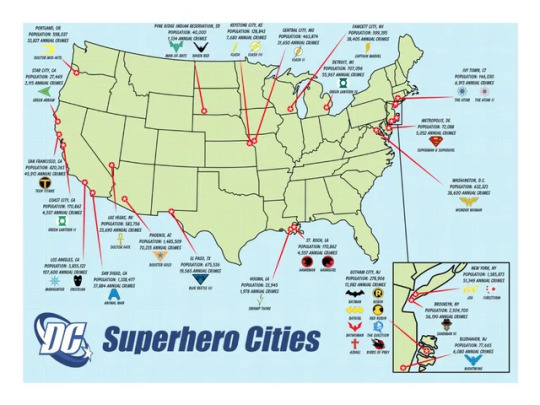
So this gets to the weirdness of D.C geography. When Superman was first established, there was much less of a cohesive "universe," so if Siegel and Shuster wanted Superman to specifically be raised in Kansas, that's where he was from and the rest of the geography would have to work itself out.
IMO, this early slapdash approach to world-building has (over time) led to some things that just don't make sense to me as a student of urban history and urban studies:
Metropolis shouldn't be in Delaware. It doesn't make sense in terms of urbanization, given the context of an already-crowded Northeastern Corridor - Delaware simply does not have the capacity to sustain a city of 11 million people, and you wouldn't get a municipality of that size right next door to New York City (as well as D.C's other fictional cities in the area). The whole idea of Metropolis and Gotham being across the river/bay from each other has never really worked for me; you can still do Superman/Batman team-up stories no matter where they are, because Superman can fly and Batman has his own personal fighter jets.
More importantly, it doesn't make sense in terms of historic patterns of urban migration. Moving to the big city in search of the American Dream is a big part of the Clark Kent story, but historically people moving from rural to urban areas overwhelmingly go to the nearest large city, depending on how transportation networks are arranged, whether we're talking about train lines or direct flights or highways or bus routes. There is a reason we can track regional movements of black communities during the Great Migration, because who went where depended on which train lines ran through which states:

This is why I've always felt that, while Metropolis has aesthetically been associated with New York City, it logically should be Chicago. It is the biggest city in the Midwest, one very much associated with robber baron industrialists and corruption at the highest levels, and absolutely stuffed with art deco architecture for Superman to pose on top of. Up until the Tribune Company began to strip it for parts, it's also been a major newspaper town with a long tradition of muck-raking investigative journalism that would inspire a starry-eyed cub reporter like Clark. As one of the original transit hubs and the U.S' own "nature's metropolis," it is precisely the place that a Kansas farm boy would hop a train to, because all trains go to Chicago. Also, culturally I like it better that Clark Kent represents the City of Wide Shoulders whereas Bruce Wayne is the typical Tri-State Area Type-A personality.
Going back to D.C's bizarro Northeast geography, I likewise have an issue with Gotham being in New Jersey...if New York City is also supposed to be a major metropolitan area in the D.C universe. Just as Delaware would struggle to support a city of 11 million people, it would be very difficult to grow Gotham into a city of 10 million people so close to the gravity well of the Greater New York Metro Area. New Jersey is a pretty urbanized state, but its biggest cities tend to range in population from 300,000 to 100,000 - which works very well for a place like Blüdhaven, which is supposed to have something of an inferiority complex vis-a-vis Gotham - because a lot of the population tends to gravitate to NYC for work and eventually housing as well.
I've already said my piece about the lack of cultural specificity of D.C's Midwest.
As far as the West Coast goes, I've always found it a bit odd that Star City isn't where Seattle is supposed to be. Let's face it, the only place where Oliver Queen's facial hair would go unnoticed is Seattle. Also, Coast City is often depicted too far north on the map - if it's supposed to be a half-hour away from Edwards Air Force Base, it should be significantly more southern, down by Kern County and San Bernadino County, not practically up in San Francisco.
#dc#dc meta#the world outside your window#urbanization#urban studies#urban migration#urban demographics
95 notes
·
View notes
Text
been thinking a lot about communal living and communal parenting which means I’ve been reading the Supernuclear substack since I found it and I can’t stop thinking about this post about raising several babies in a small intentional community. Supernuclear is by these people who started the community, Radish, and talks about the nuts and bolts of starting and running Radish (rules, financials, community building) as well as featuring stories about what worked and didn’t work in other communities. im thinking through the class assumptions of Radish, and some of the other communities Supernuclear features sound frankly unpleasant (thinking of this expensive- and disorganized-sounding college-dorm-ass small weed farm)
BUT! as someone who wants babies but is really scared about how demanding it is with the State Of Everything, i LOVE this post. Radish has “baby happy hour” every day when the babies are picked up from daycare and they hang out in the communal area with other people in the community. parents can spontaneously ask to leave a baby monitor with other folks so they can go out without paying for a sitter after their kid is asleep. “Even with a newborn, we see friends 5-7 nights a week. We go out to dinners and parties on a whim. And we have a dozen friends who are invested in our kid, share in their milestones, and feel 100% comfortable watching them for a hour or even a weekend.” girl the dream…….
#my posts#urban studies#<- I GUESS i mean that’s my tag that’s closest to this and when I think about urban studies I think about communities anyway#but anyway. I have some fondness for even the unpleasant sounding and failed intentional communities I think we can learn from anything and#there have to be better ways than what we’re doing now#I had a great time over the weekend cooking for ceasefire protestors in an intentional community that was so clean and bright and chill#it was really cool#personal
17 notes
·
View notes
Text


16th of September 2023
I missed the whole second week of uni because I was sick 😂😭 trying to catch up now (and slurping Ramen without being able to taste it 🥺)
#studyblr#geography#study#desk#motivation#uni#mine#study setup#studying#study aesthetic#master studies#MSc#geoinformatics#Urban studies#reading#goodnotes#iPad study
29 notes
·
View notes
Text



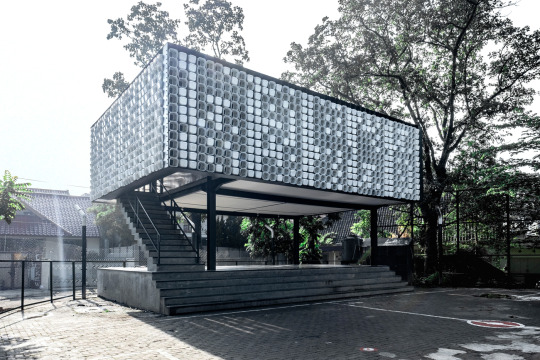
This is not simply or strictly a gangster cool, though ever since Peter Weir’s The Year of Living Dangerously, and again with the 2012 documentary The Act of Killing, Jakarta has loomed in the Western cultural imaginary as a tropical noir, an urban heart of darkness. Joseph Conrad actually did write a 1915 novel set on Java, called Victory: An Island Tale, and, in tandem with the Dutch classic of political awakening, Max Havelaar, anonymously penned in 1860, it portrays Indonesia as the Asian colony in extremis. Much like the films, both novels are rife with complex cultural misunderstandings, moments of startling clarity, and undercurrents of unfathomable cruelty. Yet none of these works delves much into the spatial character of Batavia, old or new. In contemporary culture Jakarta registers now as a vague haven of criminal reinvention (see Blackhat, by Michael Mann), just as Los Angeles did for much of its history, bathed in the seductive shadows of ill repute. In both cities, though, one finds as much sunshine as noir — and in Jakarta far more day-to-day consideration than corruption.
Abetting their outlaw casting, Jakarta and Los Angeles are both cities of systems, rather than boundaries. Indeed, Jakarta is shaped by the same two dynamic forces as Los Angeles, and their corollary infrastructures: waterflow, though measured in deluge rather than drought; and traffic, though more constant and intense here than in L.A. Either an excess or scarcity of water requires intensive hydro-systemic management, so both cities are coursed by many canals running from their highlands down-basin to their harbors. Too big to bury but too meager to provide riverfront causeways or esplanades, the many concretized and cordoned “creeks” of both cities form a kind of urban subconscious in plain view, reminders of how nature was bought off early, but not forever, by the Dutch East India Company or the U.S. Army Corps of Engineers.
31 notes
·
View notes
Text

Chicago, Illinois
#psychogeography#chicago#new topographics#35mm#film photography#illinois#lake michigan#midwest#urban studies#urban landscape
17 notes
·
View notes
Text
Urbanity, Culture, and Politics
Sin embargo, como muestra la historia de las polis griegas entre la democracia y la tiranía, ese equilibrio entre la metafísica del poder y su concreción en la ciudad es frágil. La lección histórica de esos tiempos, también de la historia política de la ciudad Siena, indica que hay que luchar por la calidad de la vida ciudadana. Producir y recibir tales imágenes, como la del buen gobierno [en la pintura mural] de Siena, requiere una cierta cultura urbana. Según su origen en latín, cultura significa una actitud agraria, el cultivo de un campa para que florezcan la plantas.
However, as is shown in the history of the Greek polis' inbetween democracy and tyranny, that balance between the metaphysical of the power and its concretion in the city is fragile. The historical lesson of those times, as well as of the political history of the city of Siena, indicates that it is necessary to fight for quality of city life. To produce and receive such images, such as that of the good government (in the mural painting) of Siena, requires a certain urban culture. According the origin from Latin, cultura signifies an agrarian stance, the cultivation of a field to make the plants grow.
En sus formas compuestas, el verbo colere, raíz del sustantivo cultura, indica refinar (excolere), elaborar (percolere), reconstruir (recolere). Estos ejemplos muestran que el concepto de cultura, ya en los tiempos romanos antiguos, fue ampliado a otras áreas de expresión humana, como las artes y las ciencias. No obstante, a pesar de las diversas formas en que se amplió el concepto de cultura, desde sus orígenes agrarios, se mantuvo la idea esencial de que la cultura no es un regalo, al contrario, es el resultado de un trabajo duro. Como el campesino lucha con su terreno para cosechar, el ciudadano lucha con su campo urbano para ganar una convivencia armónica. Cultivar la ciudad requiere aprovechar el potencial y asumir la responsabilidad. Cultura, en este sentido básico, no es una decoración de la política, sino uno de sus principios generales. Cultura exige una capacitación para arreglar los conflictos con racionalidad y control afectivo dentro de la comunidad, incluyendo la definición de límites de cada articulación espacial-arquitectectonica dentro de los muros de la ciudad. En fin, cultura implica la conciencia colectiva de valores y restricciones a favor de la comunidad.
In its composed forms, the verb colere, root of the substantive 'culture', indicates 'to refine' (excolere), 'to elaborate' (percolere), 'to reconstruct' (recolere). These examples show that the concept of culture, already even in ancient Roman times, was extended to other areas of human expression, like the arts and sciences. However, in spite of the diverse forms in which the concept of culture extended itself, ever since its agrarian origins, the essential idea has been maintained that culture is not a gift: on the contrary, it is the result of much hard work. Just as the rural peasant struggles with his land to produce crops, the city-dweller struggles with his urban field to obtain a harmonious cohabitation. Cultivating culture requires taking advantage of potential and assuming responsibility. Culture, in its basic sense, is not a political decoration, but rather one of its general principles. Culture demands the capacity for resolving conflicts with rationality and effective control within the community, including defining the limits of each spacial-architectural articulation within the perimeters of the city. Summarily, culture implies the collective conscience of values and restrictions in support of the community.
Todas estas descripciones comprenden le que se llama urbanidad. ¿Pero, por que, en estos discursos, se distinguen los términos “cuidad” y “cultura urbana”? El termino, “ciudad” se apoya en el concepto latino de civitas, que define una estructura metafísica de convivencia entre ciudadanos, con sus reglas sociales, sus leyes, costumbres y rituales. El termino complementario a esta superestructura virtual es urbs, palabra que indica la estructura material de la ciudad, sus muros, calles, casas. Las piedras de la urbs preservan y confirman definitivamente el espíritu de la civitas. Por su función mnemotécnica, la urbs sirve como instrumento educativo a sus habitantes. Por ello, la cultura urbana es algo muy concreto: es la verificación de lo que quiere la comunidad ciudadana.
All of these descriptions comprise what we call urbanity. But, why then, in these discussions, do we make the distinction between the terms "city" and "urban culture"? The term "city" is supported by the Latin concept of civitas, which defines a metaphysical structure of cohabitation between city-dwellers, with its social rules, its laws, customs, and rituals. The complementary term to this virtual superstructure is urbs, a word indicating the material structure of the city, its walls, streets, houses. The stones of the urbs define and definitively acknowledge the spirit of civitas. By its mnemonic function, urbs serves as an educational tool for its inhabitants. Urban culture is something very concrete: it is the verification of what the urban community desires.
Paisajes Urbanos: imagen y memoria, Peter Krieger, 2006
2 notes
·
View notes
Photo
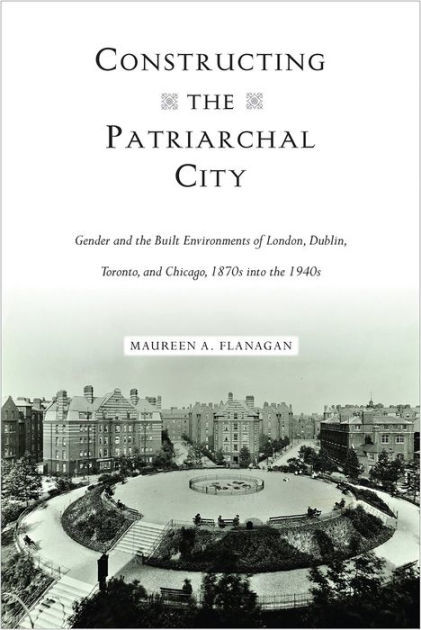
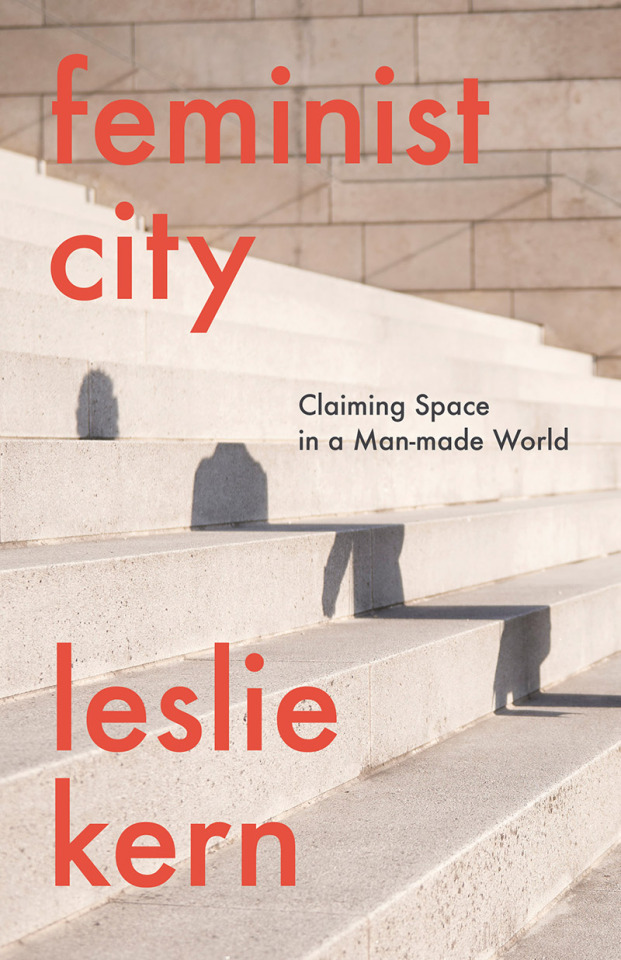
Constructing the Patriarchal City: Gender and the Built Environments of London, Dublin, Toronto, and Chicago, 1870s into the 1940s (link)
Maureen A. Flanagan (2018)
Constructing the Patriarchal City compares the ideas and activities of men and women in four English-speaking cities that shared similar ideological, professional, and political contexts. Historian Maureen Flanagan investigates how ideas about gender shaped the patriarchal city as men used their expertise in architecture, engineering, and planning to fashion a built environment for male economic enterprise and to confine women in the private home. Women consistently challenged men to produce a more equitable social infrastructure that included housing that would keep people inside the city, public toilets for women as well as men, housing for single, working women, and public spaces that were open and safe for all residents.
Feminist City: Claiming Space in a Man-Made World
Leslie Kern (2019)
We live in the city of men. Our public spaces are not designed for female bodies. There is little consideration for women as mothers, workers or carers. The urban streets often are a place of threats rather than community. Gentrification has made the everyday lives of women even more difficult. What would a metropolis for working women look like? A city of friendships beyond Sex and the City. A transit system that accommodates mothers with strollers on the school run. A public space with enough toilets. A place where women can walk without harassment.
In Feminist City, through history, personal experience, and popular culture, Leslie Kern exposes what is hidden in plain sight: the social inequalities built into our cities, homes, and neighborhoods. Kern offers an alternative vision of the feminist city. Taking on fear, motherhood, friendship, activism, and the joys and perils of being alone, Kern maps the city from new vantage points, laying out an intersectional feminist approach to urban histories and proposes that the city is perhaps also our best hope for shaping a new urban future. It is time to dismantle what we take for granted about cities and to ask how we can build more just, sustainable, and woman-friendly cities together.
5 notes
·
View notes
Text
Philly: A place for all
In class this week, we delved deep into compositional theory in urbanism and the proponents of it. This theory explores how we, as residents, can foster a profound sense of community within our neighborhoods, no matter if we call a sprawling metropolis or a quaint small town our home. It was a captivating discussion, and it struck a chord with me because I've seen it come to life right here in Philadelphia.
One of the most celebrated examples of this concept here in Philly is the Gayborhood, which I visited two weekends ago on a night out. The contrast between the vibrant display of pride in the Gayborhood and my memories of Jamaica was stark. In the Gayborhood, rainbow flags fluttered proudly from storefronts, and every corner seemed to exude an atmosphere of acceptance and celebration. It was a stark contrast to my experiences in Jamaica, where the LGBTQ+ community faced considerable challenges and discrimination. This experience left me with a mix of emotions: I was grateful for the safe and accepting space it provided, but I was also reminded of the work that still needed to be done globally. The Gayborhood serves as a beacon of hope, a testament to what could be achieved when communities came together to support one another.
Just a few blocks away from the Gayborhood, I've found myself immersed into the bustling atmosphere of Chinatown on the occasional weekend; a place that is living testament to the strength of cultural identity and community bonds. The streets are a sight to behold, adorned with colorful lanterns, and the air carries the tantalizing aroma of authentic Chinese cuisine. It's a place where I've seen both residents and visitors alike experience the rich Chinese culture, fostering a sense of belonging that goes beyond geographical boundaries.
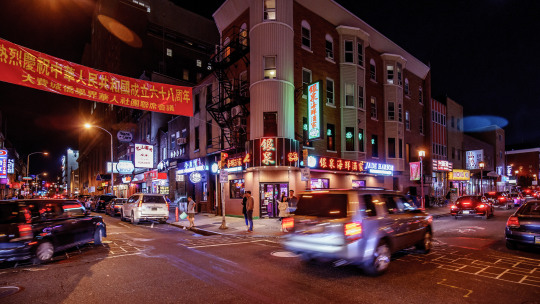
Chinatown, Philadelphia
Venturing beyond Center City, I've had the opportunity to explore the remarkable diversity found in Cedar Park, situated in the heart of West Philly. Here, the African and Caribbean populations have created their own unique enclaves, enriching the cultural mosaic of the region. I've discovered vibrant African/Caribbean markets, heard a medley of languages spoken on the streets, savored the flavors of various cuisines from across the African and Caribbean diaspora, and even had my hair braided at one of the many hair salons. Seeing my Jamaican culture celebrated through the tantalizing aromas of jerk chicken and the lively reggae music playing in the background of a random mart brought a sense of nostalgia and comfort, reminding me that cultural diversity was not only welcomed but embraced in all areas of Philly.
3 notes
·
View notes
Photo


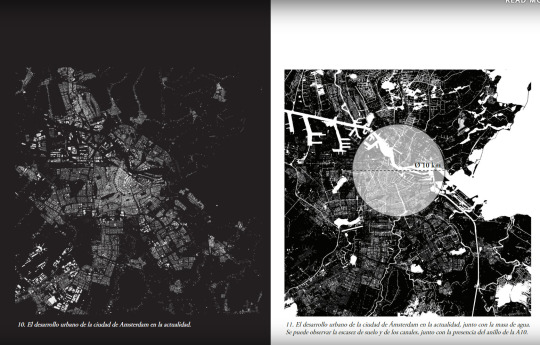
Isabel Albert Lopez, Amsterdam. Urban Evolution, 2019
https://issuu.com/isabelalbertlopez/docs/_tfg_albert_lopez__isabel_2019
5 notes
·
View notes
Note
Thoughts on Robert Moses?
I think I've more or less covered them in my previous posts on the subject. I consider Moses to be a real tragedy for New York, because he was clearly someone of great political and adminstrative ability, but who was just fundamentally wrong about his core ideas relating to transportation and transit, and who used his abilities whenever and wherever possible to fuck over poor communities of color.
The most dangerous thing one can be is competent and evil at the same time.
51 notes
·
View notes
Text
finally finished the death and life of great american cities after carrying it around for months not reading it and was reminded of an essay I wanted to write months ago about the actual star (the novel about a radically open/democratically surveilled utopia) and times square red times square blue, which embroiders on some of the death and life’s ideas about benevolent social surveillance. and the point of the essay, which I’m not writing at least until I read more people responding to jacobs, was basically: who is social surveillance good for?
both delany and jacobs paint a pretty utopian picture of city streets in which order is kept by constant eyes on the street and a duty of care felt by the community. delany specifically includes unhoused and sex worker communities in his idea of the fabric of a neighborhood, and although I was already suspicious of how his ideal social surveillance interacts with marginalized communities, I was even more surprised at how much the death and life relies on the idea of creating an ideal environment for spending money to make a neighborhood function.
it frequently invokes small shopkeepers as goods in that they keep peace over the streets to ensure that customers feel safe there. so if you’re not a customer and your presence makes customers feel unsafe, die I guess? sometimes the book also conflates unvisited (+ therefore dangerous) spaces with uneconomically productive spaces. this can make intuitive sense; if people don’t frequently pass something like a library or park on their way to engage in the economy in some way (work, shop), it can become a dead zone with easy opportunities for crime
but this feels so cynical! ‘if you’re not making and spending money there’s no need to go places’ is so bleak. I don’t know. maybe this made more sense in jacobs’ time because there was more of a culture of eating your meals at cafeterias and patronizing your local pub and drinks weren’t $14 and people weren’t constantly warned that eating out was what was keeping them in debt. because right now I would kill for more places where I could go hang out for free but in jacobs’ mind those places would become dead zones. and maybe they would! if my neighborhood had a free community center I can easily see nobody going because there’s nothing to be gained by it.
this post got away from me but the point is “how do we create a community that includes people on the margins and places with noneconomic uses when everyone is living in atomized units and spending all their time surviving.” also “why don’t we live in the dispossessed.”
#don’t get me wrong I really liked the book I think Jane jacobs comes across as audacious and funny and intuitively right about a lot of at#the time unorthodox things about cities#but I was surprised how much she tended to rely on the free market within loose government controls#both in what I talked about above and in privatizing public housing#which makes sense given that she lived in an era before housing prices were supposed to outstrip wages indefinitely by design#and in an era where the government was doing a lot of sweeping and totally wrongheaded projects in the city#but anyway. I need to read an economist’s 2020s reappraisals of her ideas immediately#my posts#reading tag#urban studies
10 notes
·
View notes
Text


7th of September 2023
I was sunny and 24°C in Copenhagen today.
That’s not normal at all.
It was so nice to go swimming in the harbour after class, but there is also a nagging concern that arises when the sun is burning like that - in September, in a nordic country.
Hope your day was fine!
🍀
#Nordic#studyblr#geography#study#desk#motivation#uni#mine#study setup#studying#study aesthetic#climate change#climate#master studies#outdoor studies#Urban studies#Urban planning#Urban#Capital#Scandinavia
18 notes
·
View notes
Text

Context for “Why is literary Chicago the backbone for so much of Mann’s film work?” From “Chicago: ‘The Classical Center of American Materialism’” by Henry Claridge, in The American City: Cultural and Literary Perspectives, edited by Graham Clarke, Critical Studies Series, 1988.
12 notes
·
View notes
Text
youtube
Engineers, planners, politicians, and advocates all around the world are trying to improve their cities and build more great walkable places with viable alternatives to driving. But there's a looming trend that could undo all of that hard work: the growth of SUVs and light trucks. This could all be solved if these pathetic suburbanites could just buy small cars, station wagons, or minivans instead.
#transportation#infrastructure#urban planning#cars#suvs#light trucks#urban studies#really recommend this video if you haven't seen it
3 notes
·
View notes
Text

The first book to explore how our cities gentrify by becoming social media influencers—and why it works.
Cities, like the people that live in them, are subject to the attention economy. In The City Authentic, author David A. Banks shows how cities are transforming themselves to appeal to modern desires for authentic urban living through the attention-grabbing tactics of social media influencers and reality-TV stars.
Blending insightful analysis with pop culture, this engaging study of New York State’s Capital Region is an accessible glimpse into the social phenomena that influence contemporary cities. The rising economic fortunes of cities in the Rust Belt, Banks argues, are due in part to the markers of its previous decay—which translate into signs of urban authenticity on the internet. The City Authentic unpacks the odd connection between digital media and derelict buildings, the consequences of how we think about industry and place, and the political processes that have enabled a new paradigm in urban planning. Mixing urban sociology with media and cultural studies, Banks offers a lively account of how urban life and development are changing in the twenty-first century.
#reading list#city authentic#books#urban planning#urban studies#political economy#david banks#david a banks
2 notes
·
View notes
Text

The Heshka image I shared yesterday put me in mind of this Roger Brown painting, If Christ Came to Chicago. That title is an allusion to the William T. Stead book of the same name published in the 1890s, centering on description of the Church that Stead envisioned in Chicago a hundred years hence. (I explored that in more detail in a 2014 blog post, written when I was living in Chicago and very active in church and social justice activities there. https://joescarry.blogspot.com/2014/10/let-the-church-out-of-the-closet.html )
The intersection (collision?) of the "city" and Church (and/or faith) turns up again and again in Flannery O'Connor's work.
I have come to appreciate her treatment of that more as I saw more and more US cities. I grew up in suburban New Jersey, and had occasional experiences of New York City; but there is an enormous range of flavors of city lying in-between those two poles, and I am only now grasping how perceptive O'Connor was about the nuances of all those places, especially when confronted by the pilgrim
1 note
·
View note